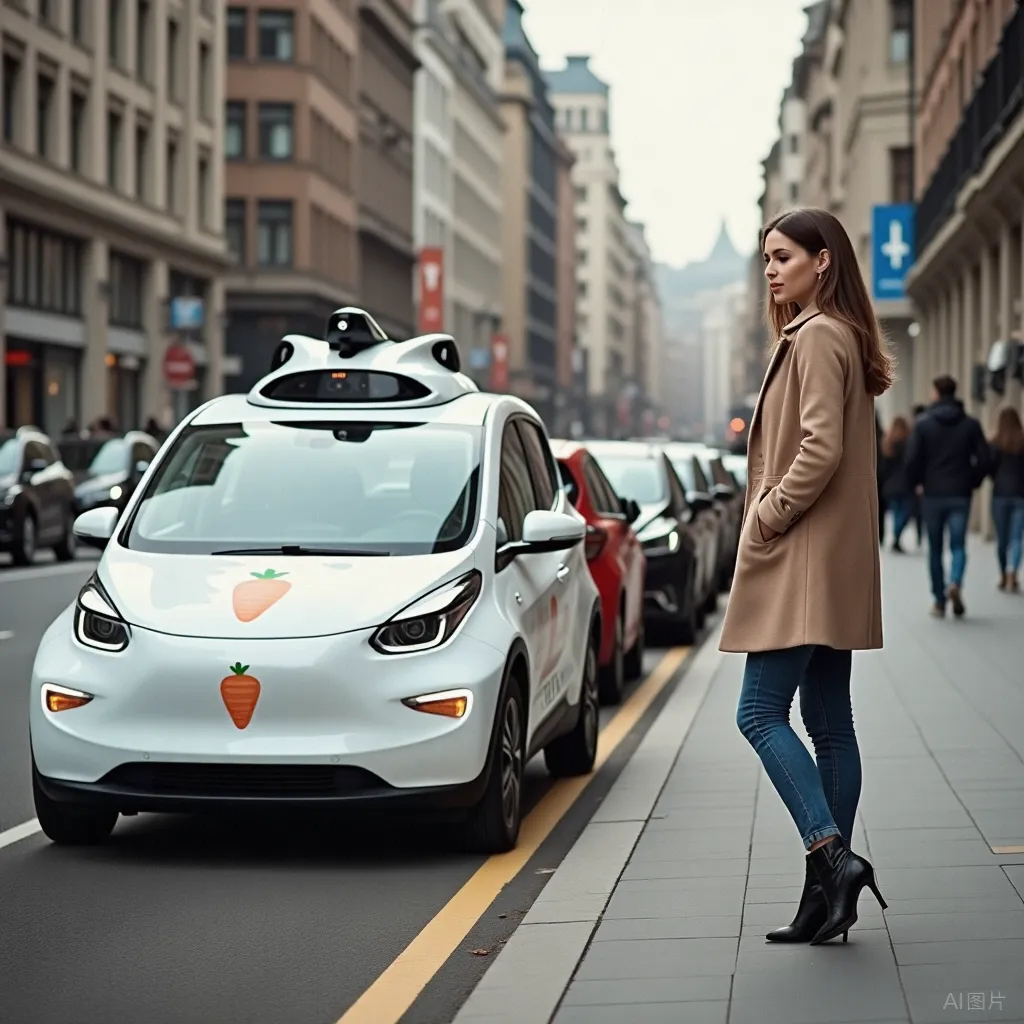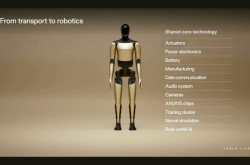China's "Nezha's Turmoil in the Sea" Strategy in the Sino-US Autonomous Driving Battle
![]() 03/10 2025
03/10 2025
![]() 499
499
Introduction
On the morning of March 7, at a press conference of the National People's Congress, a CGTN reporter mentioned that DeepSeek showcased China's innovation capabilities in the field of artificial intelligence and asked Foreign Minister Wang Yi how he views the competition between China and the United States in the field of technology.
Foreign Minister Wang's response was truly inspiring!
He said that China's technological innovation has made breakthroughs all the way. Despite constant external pressure, wherever there is a blockade, there is a breakthrough; wherever there is suppression, there is innovation; the fiercest place in the storm is precisely the stage for "Nezha's Turmoil in the Sea" and "soaring into the sky". As an ancient Chinese poem says, "Green mountains cannot block the river's eastward flow." High walls in a small courtyard cannot block innovative thinking, and decoupling and chain breaking will ultimately isolate oneself.
This makes the Unmanned Vehicle Coming (WeChat public account: Unmanned Vehicle Coming) can't help but think that in the popular race of autonomous driving, the competition between China and the United States is also quite fierce. How can China, like Nezha, show its prowess in this competition?
(For reference, please click:

I. Let's First See How "Hot" the Autonomous Driving Race Is
The autonomous driving race has continued to heat up in recent years, becoming one of the most watched fields in the technology and automotive industries.
The year 2025 is considered a critical turning point in the development of autonomous driving technology, especially with the acceleration of the commercialization of L3 autonomous driving, marking the industry's transition from technology verification to large-scale application.
End-to-end intelligent driving technology has become a new trend in the industry. It directly maps driving actions through deep neural networks, significantly improving the system's generalization ability and computational efficiency. Companies such as Tesla, Huawei, and XPeng have promoted the city NOA (Navigation Assisted Driving) function nationwide, continuously enhancing user experience!
According to the forecast of market research institution MarketsandMarkets, by 2030, the global autonomous vehicle market size will reach hundreds of billions of dollars, with the Chinese market alone potentially reaching hundreds of billions of dollars.
This is like a super-large "cake" that everyone wants a piece of!
II. US Autonomous Driving: First-Mover Advantage, Stepping Up Pressure
Since the 2004 DARPA Challenge, the United States has been leading in autonomous driving technology research and development and commercialization.
Companies such as Google's Waymo and Tesla have laid the foundation for the United States' leadership in the global autonomous driving field through large-scale testing and commercial operations.
Technology Research and Development and Commercialization
Technology Accumulation:
The United States has cultivated many top talents in the field of autonomous driving through the DARPA Challenge, and these talents later became the core strength of companies such as Waymo and Cruise. Since launching its autonomous driving project in 2009, Waymo has provided driverless taxi services in multiple cities, completing millions of paid trips.Commercialization:
Waymo plans to launch driverless taxi services in Austin and Atlanta in early 2025 in collaboration with Uber, further expanding its commercial footprint. Tesla has also announced that it will launch driverless taxi services in 2025 and plans to promote them globally.Policy Support and Regulatory Innovation
Policy Deregulation:
The National Highway Traffic Safety Administration (NHTSA) of the United States has launched the "Automated Vehicle Safety, Transparency, and Evaluation Program (AVSTEP)", removing limits on the number of autonomous vehicles and promoting industry innovation through a tiered regulatory framework.Local Support:
States such as California actively support autonomous driving testing and operations. Waymo's operational area in San Francisco and Los Angeles has exceeded 1,200 square kilometers.Capital and Technology Investment
Capital Inflow:
Google's parent company Alphabet plans to invest an additional $5 billion in Waymo in the coming years, and Tesla continues to increase investment in autonomous driving technology research and development.Technology Integration:
American tech giants such as Amazon and Google lead the world in autonomous driving patent reserves. Amazon has enhanced its technical capabilities through the acquisition of Zoox.Despite the United States' early lead in autonomous driving, it still faces challenges such as low public trust and safety incidents. Surveys show that 61% of American consumers are afraid of autonomous vehicles. In the future, the United States needs to further focus on technology safety and public education to consolidate its global leadership.
III. China's Autonomous Driving: What "Secret Weapons" Does It Have?
Data Advantage: The "Fuel" of Autonomous Driving
As the world's largest automotive market, China sells tens of millions of vehicles annually.
This huge vehicle parc is like an "fuel warehouse" for autonomous driving, providing an endless source for data processing and analysis.
Taking China's Didi Chuxing platform as an example, as one of the world's largest travel service platforms, Didi processes hundreds of millions of travel orders each year. Behind these massive amounts of data lies countless real driving scenarios and travel demands.
For example, in the streets and alleys of some cities, vehicles need to cope with frequent pedestrian and electric bike crossings. Didi's autonomous driving team uses abundant local data to train autonomous driving algorithms that are more adaptable to such complex road conditions. According to the team, the recognition accuracy of Didi's autonomous vehicles for pedestrians and non-motor vehicles has reached over 99% in actual tests.
Policy and Industry Collaboration: The "Accelerator" of Autonomous Driving
The Chinese government has given strong support to the development of the autonomous driving field. Various regions have issued policies and regulations to facilitate the research and development and testing of autonomous driving technology.
For example, cities such as Beijing, Shanghai, and Guangzhou have planned dedicated large-scale autonomous driving test roads and closed test areas.
Beijing Economic-Technological Development Area is a typical example. It brings together leading autonomous driving companies such as Baidu, Pony.ai, and Didi, forming an industrial cluster effect. The government also provides comprehensive support for enterprises in testing operations, talent cultivation, and other aspects.
Guided by policies, cooperation between enterprises and research institutions has become closer, and resources have been allocated more efficiently.
Talent Advantage: The "Think Tank" of Autonomous Driving
China has abundant talent resources. There are many "Double First-Class" universities, which produce a large number of outstanding graduates in computer science, artificial intelligence, vehicle engineering, and other majors each year.
Taking Tsinghua University as an example, it has established multiple professional laboratories in fields related to autonomous driving, where hundreds of relevant graduate and doctoral students conduct in-depth research each year.
At the same time, China has attracted a large number of overseas talents to return and start businesses. For example, some talents who have engaged in autonomous driving research in well-known foreign technology companies and universities have devoted themselves to the domestic autonomous driving industry.
They have brought back internationally advanced technologies and concepts, injecting new vitality into the development of China's autonomous driving technology.
Rise of Auto Companies: The "New Force" of Autonomous Driving
Chinese auto companies are becoming the "new force" in the field of autonomous driving, driving China to occupy an important position in the global autonomous driving competition through technological innovation and large-scale application.
In 2025, BYD released the high-end intelligent driving system "Divine Eye", supporting full-speed hands-off driving. This system is equipped in high-end models such as the Yangwang, demonstrating BYD's technical strength in the field of autonomous driving.
XPeng Motors excels in the field of city NOA (Navigation Assisted Driving). Its MONAM03 MAX model offers industry-leading intelligent driving capabilities at a price of RMB 150,000, further promoting the popularization of intelligent driving technology.
Huawei has launched a full-stack intelligent driving solution through cooperation with automakers such as Changan and Chery. For example, the Zhijie R7 model jointly developed by Huawei and Chery is equipped with Huawei's self-developed intelligent driving system, demonstrating strong technical capabilities.
Luobo Kuaipao, WeRide, and Pony.ai are leading enterprises in China's autonomous driving field, focusing on the commercial operation of Robotaxi (driverless taxis). Luobo Kuaipao's orders have exceeded 9 million, WeRide has conducted L4 autonomous driving tests in multiple cities worldwide and plans to achieve large-scale commercialization in 2025.
Autonomous driving companies in other fields such as Ninebot, Neolix, Cainiao, and mining companies such as Cidi Zhijia, E-Control, Tage Zhixing, and Zhongke Huituo
Through technological innovation and commercialization, these auto companies are driving the rapid development of autonomous driving technology and becoming leaders in the global autonomous driving field.

IV. Future Outlook: China's Autonomous Driving, Soaring into the Sky Like Nezha
An objective analysis shows that the United States started earlier in autonomous driving technology research and development, and American companies have a leading edge in some key technology areas, such as chip manufacturing.
Moreover, the United States has spared no effort in policy support. For example, in August 2023, San Francisco approved the all-weather, all-region commercial operation of driverless taxis, providing a favorable policy environment for the development of American enterprises. Recently, the Trump administration has increased its support for autonomous driving policies.
In contrast, while China has also issued a series of policies to promote the development of the driverless vehicle industry, there is still room for improvement in the speed and openness of policy implementation.
Facing the fierce competition in autonomous driving between China and the United States, Chinese enterprises, like Nezha, have an unyielding spirit.
In the future, Chinese enterprises must continue to increase investment in technological research and development and break through key technological bottlenecks. For example, in chip research and development, Chinese enterprises must accelerate their pace and improve chip performance and localization rates.
At the same time, it is necessary to fully utilize China's market advantages and industrial chain advantages to continuously optimize products and services.
In terms of application scenario expansion, in addition to existing fields such as driverless taxis and urban logistics, exploration can also be conducted in more areas such as public transportation and logistics distribution.
In terms of policy, China also needs to further increase support, accelerate the formulation and improvement of relevant laws and regulations, and provide a more stable policy environment for the development of autonomous driving technology.
In short, Unmanned Vehicle Coming (WeChat public account: Unmanned Vehicle Coming) believes that just like Nezha causing turmoil in the East China Sea during a storm, China's autonomous driving industry will also soar into the sky in the fierce competition with its own strength and courage.







